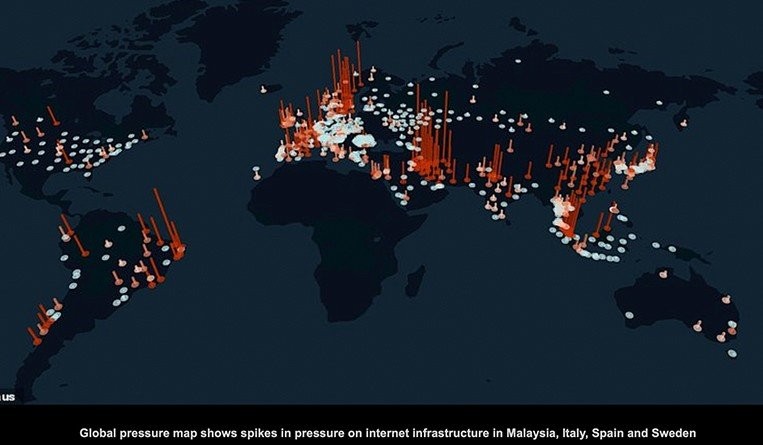'Net infrastructure tested by Covid-19
27 March 2020

Is your internet speed slower than usual?
You’re not alone. As most workers around the world have turned their kitchen tables, living rooms and spare bedrooms into makeshift office spaces thanks to the novel coronavirus (Covid-19) pandemic, pressure on the world’s internet infrastructure has built, according to researchers at KASPR Datahaus in Melbourne, Australia.
Most of us have received advice from our governments, employers, educational institutions or via social media telling us to stay at home and avoid contact with other people. In its most extreme form, the researchers note, this has led to complete or partial lockdowns of countries, while other nations have implemented policies that led to shut-downs of wider parts of the economy or travel bans.
A recent report published by KASPR Datahaus comes to the conclusion that more people at home, means more people online – and many of them with big bandwidth appetites.
And, it’s not just people working from home who are stressing internet infrastructures. Many adults are at home not working, along with children and university students, streaming high-definition videos and gaming – and contributing to internet congestion, slowing speeds for everyone.
“More people at home means more people online – with big bandwidth appetites,” Paul Raschky, an economist at Monash University in Melbourne and co-founder of KASPR Datahaus, told the Daily Mail. “This situation is not dissimilar to a family trying to make their way through a crowded subway tunnel. Your streaming video or video upload during teleconferencing is made up of small packets of information – these packets need to find their way down copper and fibre-optic cables across vast distances. The more streaming packets trying to make the journey at once, the more congested the pathway and the slower the arrival time.”
“In a crisis situation like this one, the internet provides our society with a previously unknown flexibility on how to react to a pandemic and potentially decrease its spread by being less reliant on directly interacting with one another. However, to make this shift from a more location- and face-to-face based physical economy, to a more decentralized, home based, and digital economy work, we need one thing: a functioning internet,” the report says.
“Unsurprisingly then, the unprecedented transformation of our behaviour has put a large strain on national internet infrastructure, but also on the global internet backbone,” researchers said.
Work from home or tele-work is no longer limited by the ability to send emails, the researchers noted, but requires video conferencing capacities, a reliable VPN connection and the ability to share large data-sets within a short period of time. Most of today’s leisure activities, streaming services, video chats, online gaming, are also very bandwidth intensive, it said.
Which all leads to one big question being asked by digital observers: will a country’s Internet infrastructure keep up with the sudden surge in bandwidth demand?
“Internet infrastructure everywhere is being tested by stay-at-home orders from governments and employers,” says Kevin Justice, an IT expert at the M4 Reactor makerspace in Salisbury, Maryland, and a computer science instructor who was not part of the KASPR Datahaus study. “Although we might think we have high speeds, the back-end infrastructure isn’t up to par.”
KASPR took billions of speed measurements globally February 13-14, 2020, and then again March 12-13, 2020, a time when many countries had major lockdowns in place. Researchers focused on regions within countries having at least 100 confirmed Covid-19 as of Friday March 13, since these are the most likely to have undertaken significant social distancing activities.
Gregory Glass






